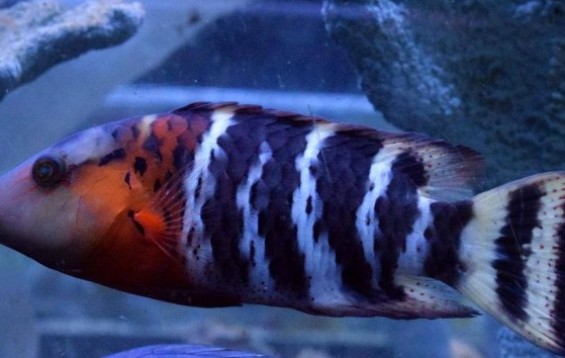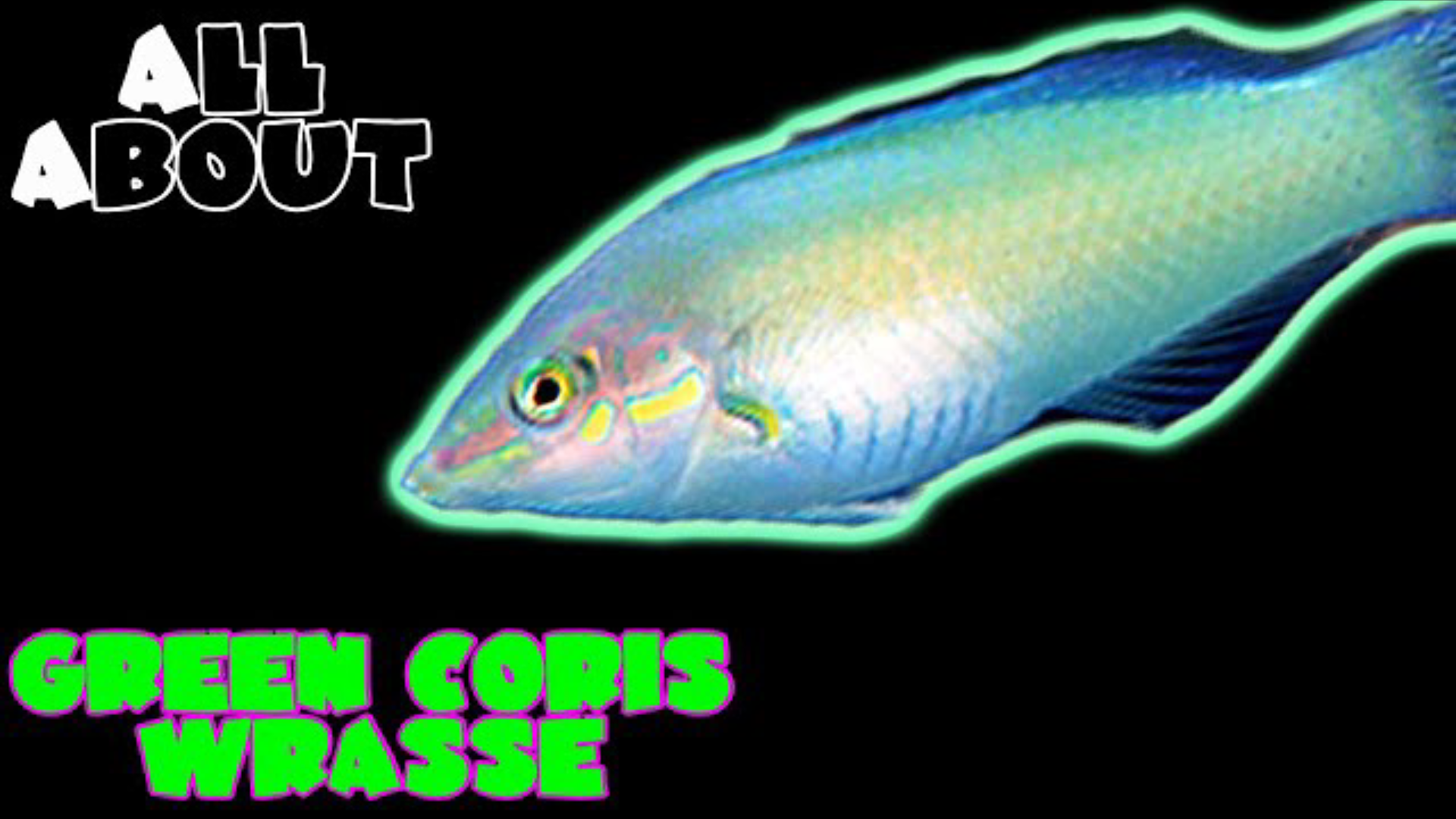- Name:
Red Breast Wrasse
(View AKA's) - Family: Labridae
- Species: Wrasse
- Scientific Name: Cheilinus fasciatus


More Details
General info about Red Breast Wrasse
While its size alone is more than impressive, the Red Breast Wrasse boasts six or seven white vertical stripes against a reddish-brown body, with a splendid yellow-orange pop of color surrounding the pectoral fin. While the Red Breast Wrasse can grow rather large, they are generally a shy species and should only be housed in an appropriately large aquarium with other non-aggressive fishes to avoid being bullied. They are known to move sand around in search of food and will eat hard shell invertebrates and sometimes small fish. The Red-Breast Wrasse is commonly found roaming alone in lagoons and inner reefs, along reef edges and rubble piles, and can often be seen resting on the seabed.
Caution with Red Breast Wrasse
Wrasse are considered jumpers make sure your aquarium has a tight-fitting canopy or screen cover to prevent the Wrasse from jumping out of your aquarium. Wrasse have been known to jump through the smallest of holes in a canopy.
Wrasses prefer to have a 2" (5cm) sandbed to allow them to burrow into the sand to sleep or when they feel like they are in danger. Some people with bare bottom tanks have also added a Tupperware with a 2" deep sand bed to accommodate the wrasse's needs.
They are generally peaceful but may display aggression towards members of the same species.
Relevent Articles
Original Detail
| Name | Species | Family | Scientific Name | More Detail | Added by |
|---|---|---|---|---|---|
| Red Breast Wrasse | Wrasse | Labridae | Cheilinus fasciatus | While its size alone is more than impressive, the Red Breast Wrasse boasts six or seven white vertical stripes against a reddish-brown body, with a splendid yellow-orange pop of color surrounding the pectoral fin. While the Red Breast Wrasse can grow rather large, they are generally a shy species and should only be housed in an appropriately large aquarium with other non-aggressive fishes to avoid being bullied. They are known to move sand around in search of food and will eat hard shell invertebrates and sometimes small fish. The Red-Breast Wrasse is commonly found roaming alone in lagoons and inner reefs, along reef edges and rubble piles, and can often be seen resting on the seabed. | PalaciosAn |
Changed by users
| Submitted Date | Submitted By | Status | Action |
|---|


